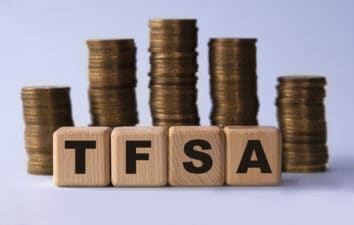Investors who bought Agrium Inc. (TSX:AGU)(NYSE:AGU) in late 2014 would have done very well—the stock is up nearly 40%, compared to the overall TSX, which is only up 3%. Agrium has also done better than its peer group, and the reasoning is twofold.
Firstly, the North American fertilizer sector as a whole is currently more expensive than it has been in over five years when comparing the entire sector’s EBITDA to a basket of fertilizer prices. The reason for this is because, among the materials sector, where most producers were experiencing historic routs, fertilizer is seen as a relatively safe space.
Agrium has been the key name in this sector since nearly half of its EBITDA is from its stable retail segment that—despite a major downturn in corn prices—has seen its margins expand steadily and its EBITDA grow.
Just how expensive is Agrium? The company currently trades at about 9.5 times its forward EBITDA compared to its historic average of 7.5 times—33% more expensive than average. According to analysts at Bank of Nova Scotia, Agrium is trading 22% above a blended average of its historical price-to-earnings ratio and EBITDA, which makes it the most expensive name in its peer group.
Can Agrium justify the high valuation?
This is the key question, and the answer depends on a few things. Agrium has a few key objectives, which it outlined at its latest Investor Day. Perhaps the main objective is the company’s goal of growing its free cash flow per share to between US$8 and US$11 by 2020. With this, Agrium should see its dividend grow substantially since it has a policy to pay out 40-50% of free cash flow.
If Agrium is able to achieve its free cash flow per share objective, the stock’s valuation does not seem as concerning. For example, Agrium has typically traded at a free cash flow yield of 7.7% using a two-years-out estimate for free cash flow (free cash flow per share divided by the share price). Current two-year-out estimates give Agrium a free cash flow yield of 7.5%, which makes the stock seem fairly valued.
If Agrium could achieve $9-10 per share of free cash flow by 2020, it would be trading at a free cash flow yield of nearly 10% at current prices. This is very high compared to its history, and Agrium shares would have to rise considerably to trade at the historical free cash flow yield of 7.7%.
Is $9-10 of free cash flow per share possible?
In Agrium’s recent conference call, management explained what would need to happen to reach their free cash flow per share objectives. Management basically stated that if the company completed its wholesale capacity expansions as planned, if its retail segment grew at the historical rate over the past six or seven years, and if market conditions for corn prices and fertilizer prices stayed near the five-year average, $10 per share of free cash flow would be very possible.
Currently, the biggest headwind are market conditions. On the wholesale side, Agrium has completed its major potash capacity expansion, and its final capacity expansion—its Borger nitrogen expansion—is on track to be finished by early 2017. The completion of these projects will see Agrium’s revenue rise on more capacity and capex fall significantly (from $2 billion in 2014 to around $550 million after 2017 when expansions wind down).
On the retail side, Agrium has major opportunities to expand by building new stores (Agrium plans to build up to 30 facilities) as well as by acquiring. (Small independent stores hold 26% of the U.S. market, which gives the market plenty of room for consolidation.)
Should corn prices improve closer to average levels (which they have substantially since the start of the year), Agrium’s free cash flow goals are very obtainable, and the stock does not seem overly expensive.








